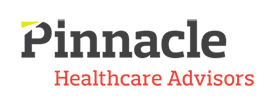 After 20 years working in all facets of the revenue cycle, I still believe that providing additional support and pay parity to Patient Access is where we need to focus more of our time, energy, and resources. Patient Access is truly our front door into our clinics and hospitals and the way into all other departments.
After 20 years working in all facets of the revenue cycle, I still believe that providing additional support and pay parity to Patient Access is where we need to focus more of our time, energy, and resources. Patient Access is truly our front door into our clinics and hospitals and the way into all other departments.
Access employees are often the first impression makers for our patients and their families. As the first and sometimes only face of the revenue cycle, these teams juggle multiple responsibilities and ever-increasing scope. While their scope is larger and ever increasing, they are usually still considered an entry-level position with less pay than other revenue cycle counterparts and less structure around training and retention. They should be onboarded, trained, and retained knowing their value and the important business impact they have on our bottom line. Ultimately, if we spent more time here on the front end of the revenue cycle, less problems would occur downstream. In my experience as a Trainer, a Director, and a Consultant, Patient Access has come a long way – but we still have more that we can do to ensure they are set up for success!
The Patient Access employment journey starts with the interview process. Are we looking for the characteristics we want to show to our patients, rather than another “warm body”? Do applicants come from a retail, restaurant, or banking background? If so, they may be wired for the service mentality we need to greet our patients and their families with a smile. Ultimately, we should be looking for strong customer service skills and the ability to prioritize, multitask, and think on their feet. We need to ask hypothetical questions and present real-world scenarios to gauge competencies and the appetite and aptitude to learn.
Once we have found the right fit, the next step is to ensure our people are properly trained: not just on our systems and processes, but also our culture and mission. This doesn’t mean simply shadowing another associate and then letting them be on their own after a week. We certainly don’t want new employees to pick up on the bad habits of other associates that may be lower performers.
That means having an established training program which includes classroom education, floor training, solid scripting and tip sheets, quality assurance checks, and plenty of time to acclimate to their environment. To be most successful, training and check-ins need to be structured and consistent (i.e., follow-up on a three, six, and nine-month cadence). We need to ensure that employees are exposed to multiple scenarios they may encounter in their journey so that they are comfortable and confident in their role. They should also always have an open avenue to seek answers from a consistent person as their journey continues. Starting this training and follow-up journey is the only way to ensure retention.
You may be thinking, “well, my organization doesn’t have a dedicated training team, so how do I make a difference?” There are a lot of resources through organizations such as HFMA and NAHAM that have certifications and online training programs, or you may consider bringing in a consultant to help you create a sustainable training program that can include these options as well as other documentation that is easy to implement and repeat.
Patient Access has high turnover and is often considered a revolving door. It’s fast-paced and demanding, and staff can quickly get burnt out. The amount of money that facilities are losing by not being able to retain these employees is high. How do we avoid that happening? The best Patient Access teams have regular check-ins with managers, monthly team meetings, continuing education, a strong Quality Assurance program, and friendly competitions. They celebrate their successes, not just in their own team but throughout the organization. Another important component to retaining our newly trained staffed is career laddering: employees see the growth potential and opportunities for advancement – this may mean additional credentialing, promotions, or both – within your walls.
We have to continue to shine a light on the amount (and importance) of the work that Patient Access does, while promoting pay parity with other departments. Always educating individuals on their impact to the revenue cycle and ultimately the patient and the experience they have. This is the only way we can flip the script on how our Patient Access department and staff are perceived across our healthcare industry.




